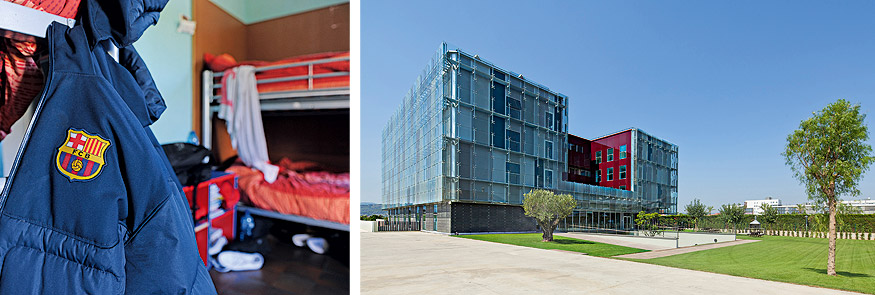
There were times when football was all about kick and rush, when bulldog qualities – strength and bite – were in demand. If you weren’t blessed with dazzling skills, you at least had a fighter’s spirit, so that even after a poor performance you walked away with the points. Over recent years, however, the battling bulldog has given way to a new model footballer – a new model of football, in fact, built around a firmly integrated team that not only unites the widest variety of types of player but in which diversity and exceptional creativity are the sine qua non of success.
The days of the authoritarian, old-school manager have gone. In his place we have the psychologically sensitized coach, who learns as much from his team as they do from him. This alone gives rise to the kind of motivation that fills the trophy cabinet.
Of all the great teams who have dazzled over recent decades, none has done so with a style as revolutionary as FC Barcelona. Indeed, under coach Josep ‘Pep’ Guardiola the Catalan club has stacked up a total of 14 national and international trophies since 2008, including three Spanish league titles, two Champions League crowns, two European Supercups and two Club World Cup titles. In the last of those finals – in Yokohama in December 2011 – Barcelona dismantled Brazilian champions FC Santos 4-0. Never has a team been so widely feted as the “best team on the planet.” In 2010 three of its stars – Lionel Messi, Andrés Iniesta and Xavi Hernández – filled the top three places in the voting for the Ballon d’Or, the highest individual award in world football.
However, Barça’s success is not what has drawn football fans around the globe under their spell; for that we must thank the aesthetic beauty of their style. Tracking technology allows us to follow the ball’s mesmerizing path as their players weave their “tika-taka” patterns, computer graphics piecing together a scarcely believable pass completion rate of over 600 per match. Yet there remains something magical about how the Catalan squad play the game. It is as if the Barça formula had been conceived by purists of the game seeking to replace the rough edges of the people’s sport with the ideals of chess and classical ballet.
The team garnering all this praise is not cut from the usual cloth, to say the least. Where rivals put a pair of heavy-weights in midfield to break up opposition attacks, Barcelona line up with a string of featherweights specializing in one skill above all else – moving the ball around. A low center of gravity is certainly helpful here, and none of Xavi, Messi or Iniesta stand taller than 1.70 m (5 ft 7 in). The presence of such players at the heart of a team lends football a rather different complexion. The team that has the ball controls the game. So if you can keep possession and play the ball around with efficiency and artistry, even strong opposition will be pushed to the edge of reason.
This is clearly not as easy as it sounds and Barcelona’s success has been built on a confluence of several factors. Since Johan Cruyff’s era as coach in the 1990s, the club has cultivated the philosophy of attractive attacking football which both fans and the club’s directorship now uphold as central to the Catalan identity. And this is not the only respect in which Barça, in the words of the club’s official motto, is “més que un club” (more than a club). In 2008 a pupil of Cruyff’s took over as coach; Pep Guardiola had played under the Dutchman as a youngster and adopted his adherence to a system of four defenders, three midfield players and three attackers. However, it is not the stature of the players or how they line up, but the manner in which they play the game that reveals most about the Barça way. Like the majority of key players in the current line-up, Guardiola – who wore the number 4 shirt and was a gifted midfield organizer in his playing days – was a graduate of the club’s La Masia youth academy.
From street player to superstar
Taking its name from a type of traditional Catalan farmhouse, until June 2011 La Masia housed the world’s most famous talent factory within its three-hundred-year-old walls. The facility was spread over 600 square meters (approx. 6,500 sq ft) close to the club’s legendary stadium, the Camp Nou, and offered places for 45 protégés. There was a kitchen, a dining room, a recreation room and a library, as well as dressing rooms, bathrooms and bedrooms, but little in the way of grandeur. This was also where a 13-year-old Guardiola came to learn about football, moving up through the various youth sections until he was eventually handed the armband as captain of the Barcelona first team. This was also where Lionel Messi developed from a street player into the best dribbler ever witnessed, and the club even paid for the expensive hormone treatment that the young Argentine needed to grow those extra few centimeters. Xavi, Iniesta, Busquets, Piqué, Pedro and the goalkeeper Valdés – all part of Spain’s European Championship-winning squad in Poland and the Ukraine this year – were schooled at La Masia. All of which explains how they enjoy such a telepathic understanding on the field. This is one ingredient of the Barça magic – a shared focus; they defend as a team, attack as a team and never lose sight of how that task should be tackled.
There was a charm in the slightly improvised nature of La Masia that has been lost with the relocation of the facility to San Joan Despi on the northern edge of Barcelona. The elite training center is now called La Masia-Centre de Formació Oriol Tort, in honor of the man who set the wheels of this systematic youth development program in motion back in 1979. Oriol Tort brought many young players through to the first team, including Guardiola and Xavi. He had passed away by the time the team embarked on its run of global success, but he knew things were heading in the right direction. The facility that bears his name spans an area of 6,000 square meters (over 64,000 sq ft) and offers rooms for 120 athletes – half of whom are footballers – as well as areas for hobbies and leisure activities.
Developing a sporting character
Carles Folguera, a former roller hockey goalkeeper and director of the academy since 2002, is our guide through the bright new building. Inside, it is a mixture of sparseness and comfort, and you look out through the window onto the training fields. “The expectations of every youngster we accept here are huge,” says Folguera. “That means we have to look after them very well. But we also have to teach the young players a sense of order and discipline.”
The expectations of everyone accepted here are huge. They are well looked after but need to show a sense of order and discipline.
At first glance, life at this football boarding school does not look dramatically different. 60 boys between the ages of 12 and 18 have made the cut from thousands of applicants. As well as Spain, they come from Cameroon, Brazil, Argentina, Senegal and the Czech Republic. During the week the students rise at 6.45 a.m., make their beds, go to breakfast and are then taken by bus to a nearby school, where they attend classes from 8.00 a.m. to 1.30 p.m. Lunch is at 2.00 p.m., leading on to homework time from 3.30 to 6.00 p.m. Football training takes place every evening between 7.00 and 8.45 p.m. Staff can be called on day and night.
Ten years ago the idea of combining learning and top-level sport was seen as a utopia. But La Masia shifted the emphasis and proved the skeptics wrong. 40 percent of Barça’s Youth A team are studying for a degree. “For many of our talented youngsters,” explains Folguera, “studying at university has become something prestigious to aim for. It is no longer an obstacle, but instead part of developing a well-rounded sporting character.”
Not all the chosen ones will make it to the top, of course. Which is why dealing with failure is one of the academy’s key areas of focus. The kids need to have a “Plan B,” as Folguera puts it. The club’s values code impresses the importance of patience, humility and hard work upon its pupils – and these are values the parents of the aspiring players also have to take on board. They need to be clear in their own minds; if you’ve given everything you can to attain your goals, there is no shame in failing to reach them.
Faithful to attacking principles
In recent times, observing the doctrine of La Masia at work in the prestigious encounters between FC Barcelona and Real Madrid has been like studying a spectacle of nature. In the 2011/12 season, Spain’s two leading powerhouses locked horns no fewer than six times, the psychological warfare between Real coach José Mourinho and Pep Guardiola even spilling over into physical confrontation. It wasn’t just about who was the best coach or who had the world’s best attacker – Messi or Cristiano Ronaldo – in their team. This was a clash of two fundamentally different systems of values. In the end it was Madrid, winners of a record number of Spanish championship titles, who gave way and changed their modus operandi. The Catalans remained faithful to their attacking principles, winning the key matches and – perhaps even more significantly – the hearts of the football world.
So would things be different if the trophies dried up? Carles Folguera lowers his voice, his enigmatic blend of gentleness and strength coming to the fore: “In this country what you’re talking about is creating honor in defeat. It’s a hard sell, I know, but it’s a skill our youngsters need to learn.
There are more important things, says the La Masia chief, than winning or losing – gaining people’s respect, for one thing. “The Dutch team of 1974 and the 1982 Brazilians did not win any titles. But we all remember them because of the way they played. Perhaps we should attach greater value to how we go about our work than the result at the end of the game.”
We talk about Andrés Iniesta, one of Barcelona’s unassuming stars and among Spain’s most respected football personalities. “It was difficult for him at first,” recalls Folguera of the boy from Albacete, in deepest La Mancha. “He was so homesick that he thought hard about leaving La Masia.”
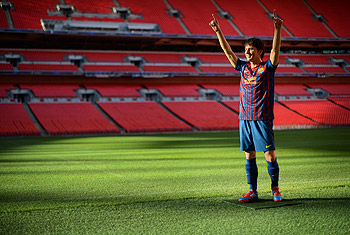
There are many players you could single out to emphasize the role the youth academy has played over the years, but Iniesta would be the best example. Still an unprepossessing figure off the field, he arrived at La Masia at the age of 12. Back home his technical talent allowed him to play with the older kids. “The physically stronger player will almost always win a tackle,” admits Iniesta, reflecting on a key element of the Barça approach made all the more relevant by his slight build. “So as a smaller player you have to move the ball on before your opponent can get to you. You have to think faster.”
Few professional footballers have risen to world-class status with as little fuss and fanfare as Andrés Iniesta, helped by the role of La Masia in plotting the course of his footballing life. Here, the players are slowly but surely introduced to the task of dominating the most powerful opponents on the football field. Ensuring young careers are sensibly paced is critical. In his first two years in Barça’s first-team squad, Iniesta was used primarily as a substitute. There were concerns about his physical toughness, although nobody doubted his extraordinary talent.
Iniesta made his debut for the Spanish national team at the age of 22, shortly before the World Cup in Germany. And under club coach Guardiola he blossomed. In 2009 he hit the winning goal in the Champions League semi-final victory against Chelsea; a year later it was his strike that decided the World Cup final against a physically imposing Dutch team in Johannesburg. Iniesta was also Spain’s outstanding performer in the recent European Championship – fleet of foot, all x-ray vision and irresistible dribbling.
“Success has not changed him,” says Folguera, and indeed, show-stealing gestures of triumph or displays of ego are not the 28-year-old’s style. “Andrés Iniesta has always remained humble. And he’s always keen to learn.”
But what exactly is it that the young players learn at La Masia?
From the outset, the boys learn not to be afraid of having possession. In fact, they learn to love the ball.
Guillermo Amor
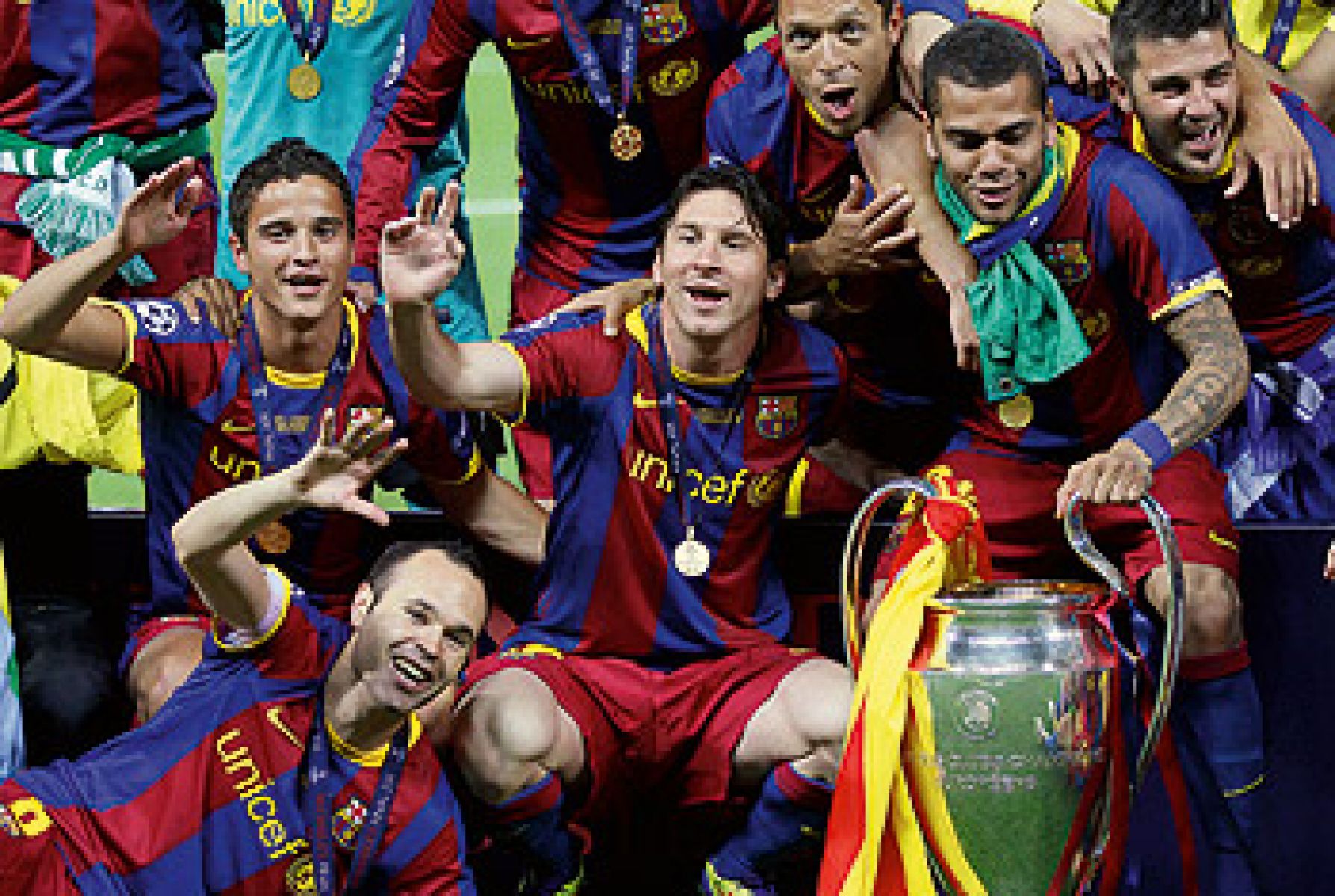
“They learn to love the ball,” says Guillermo Amor with utter conviction. A key player in the midfield engine room during the Cruyff era, Amor logged over 400 league appearances, making him one of Barcelona’s most faithful servants. He arrived at the elite training center as an 11-year-old and stayed for a full eight years. Now in his mid-40s, the wiry ex-midfielder has been FC Barcelona’s director of youth football since 2011. He works closely with the coaches of the junior teams, studies the ability of the aspiring youngsters, charts their potential and assesses their chances of developing into the real thing.
It’s all about keeping possession of the ball, explains Amor – nothing is more important. That’s how he learned to play and how his team-mate Guardiola approached the game. It is a faith shared by everybody at the club and one they reiterate before important matches: “Even if we’re losing, we stick to our beliefs.”
“Most teams are fairly well organized,” says Amor, “but just being in the right position at the right time is not enough. From a young age, our lads learn not to be afraid to hold onto the ball.” And again he uses the resonant phrase that sums up the Barça philosophy better than any other: “They learn to love the ball.”
To make this approach work you need technically accomplished players – artists first, athletes second. That’s why youth team training features none of the old-school strength and endurance training. Almost every drill takes place with the ball, often within grid squares on a half-pitch. With such tight spaces in which to work, the boys have to make decisions in the blink of an eye. “There always needs to be somebody on hand to take the ball,” says Amor. “It’s all about defending your position with the ball, rather than when your opponents have it.”
The training methodology at La Masia combines different models, as well as drawing lessons from other sports such as handball, basketball and rugby. Former fitness coach Paco Seirullo encouraged the first-team players to receive the ball with the foot furthest away. Letting the ball run across you gives you more options when it comes to the next pass. And then you can make these passing movements quicker and quicker until your opponents’ heads start to spin.
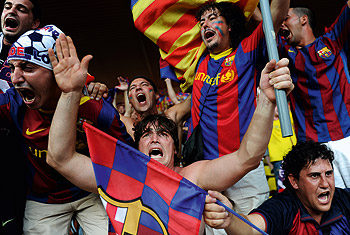
The Guardiola System lives on
All of these theories are worth little if the club does not buy into and nurture that approach over time. The appointment of Pep Guardiola to replace the Dutchman Frank Rijkaard as coach in 2008 represented a bold but well-reasoned decision. At the time, Guardiola had just one year of coaching experience behind him with the Barça amateur team, but nobody doubted his ability and devotion to the job at hand. We are now talking about the most successful rookie coach in football history. When Pep announced, in the spring of 2012, that he would be stepping down at the end of the season, the club remained true to its beliefs and promoted Tito Vilanova, Guardiola’s long-serving assistant, to fill the void. It was a decision welcomed enthusiastically by the Barça squad. The players have known Vilanova for years and can be safe in the knowledge that there will be little change in the way they are asked to play.
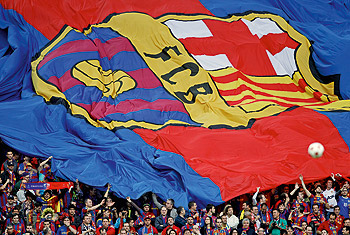
Some observers have still talked about signs of a changing of the guard in Spanish football. Last season Barça conceded the La Liga title to Real Madrid, and the first cracks began to appear in their cloak of invincibility. This is part of what makes football such an exciting, inexhaustible game: the unpredictable wheel of chance and fortune.
It was not long, of course, before proof arrived that the Guardiola system was in better health than ever, as the Selección defended their European Championship title in Poland and the Ukraine under coach Vicente del Bosque. The current generation of the national team has always been seen as an extension of the Catalan model, built on Barcelona’s attacking ethos. And in the final against Italy in Kiev, the midfield launch pad of Xavi and Iniesta served up compelling evidence that their football remains without compare.
The Barça fans have long seen this philosophy of football played the beautiful way as a reflection of themselves, and there is no reason for a coach or president to challenge such a desirable status quo. Dig deeper, though, and you will be presented with a moral tenet that has little to do with trophies and titles. “At La Masia we set out to produce both excellent football players and good people,” says Guillermo Amor. “After all, one day your career as a footballer ends. But your life goes on.”
About Paul Ingendaay
Paul Ingendaay (51) has been Madrid-based cultural correspondent of Frankfurter Allgemeine Zeitung since 1998. He is also the author of several works of non-fiction and award-winning novels.
PHOTOS: GETTY IMAGES, CORBIS
This article was written by journalist Paul Ingendaay.





